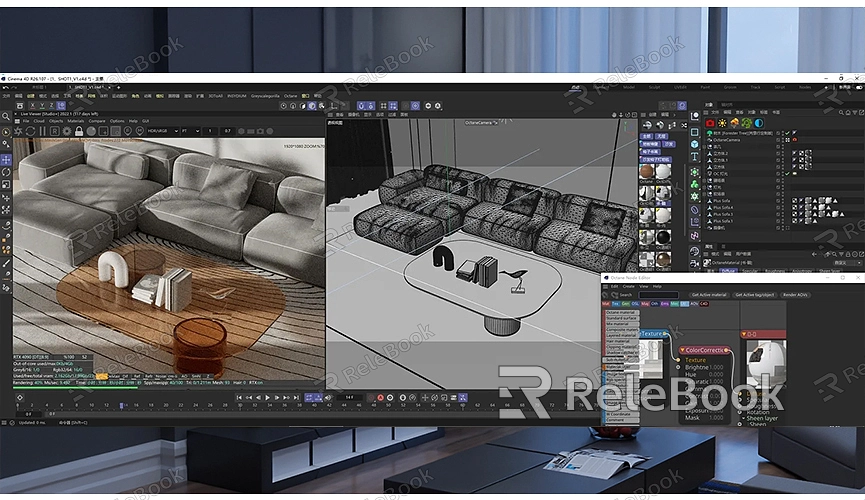How to Render a Blender Animation with Sound
Creating and rendering an animation with sound in Blender is a challenging but rewarding task that can significantly enhance your project's impact. This article will provide a detailed guide on how to render an animation with sound in Blender, helping you perfectly synchronize visual effects with audio.
Preparation
Before you start, ensure that you have completed the basic animation setup, including modeling, animation settings, and camera adjustments. Additionally, have your background music or sound effects ready, as these audio files will be synchronized with the animation.

Import Audio Files
1. Open Blender: Launch Blender and open the animation project you want to render.
2. Switch to Video Editing Workspace: At the top of Blender's interface, switch to the "Video Editing" workspace. This workspace provides tools for audio and video editing.
3. Import Audio File:
- Above the timeline in the Video Editing workspace, click the "Add" button.
- Select the "Sound" option, then choose your prepared audio file from the file browser.
- Click "Import Sound" to add the audio file to the timeline.
4. Synchronize Audio with Animation:
- Ensure the start time of the audio file aligns with the start time of the animation. You can drag the audio strip to adjust its position on the timeline, matching it with the animation actions.
Configure Render Options
1. Configure Output Settings:
- Switch to the "Render Properties" panel and select the appropriate render engine. Blender offers Eevee and Cycles, and you can choose based on your needs.
- In the "Output Properties" panel, select an appropriate file format. For animations, FFmpeg video format is commonly used as it supports combining audio and video.
2. Set Encoding Options:
- Under the "Output Properties" panel's "Encoding" section, set the "Container" to "MPEG-4" or "QuickTime."
- In the "Audio" settings, choose a suitable audio codec such as "AAC" or "MP3." Ensure the audio encoding option is enabled to merge the audio file with the video during rendering.
3. Select Output Path:
- In the "Output Properties" panel, specify the save path and file name for the rendered output. Choose a location that is easy to find.
Render the Animation
1. Check Animation and Audio:
- In the "Video Editing" workspace, play the animation to ensure the audio is well synchronized with the animation actions. Adjust the audio position or the animation timeline if necessary.
2. Start Rendering:
- Switch to the "Render" panel and click the "Render Animation" button. Blender will start rendering your animation and merge the audio file with the video.
3. Check Render Results:
- After rendering is complete, go to the specified output path and check the rendered animation file. Ensure that the video and audio play as expected and are properly synchronized.
Tips and Suggestions
- Audio Preview: Before rendering, preview the animation and audio in the "Video Editing" workspace to ensure synchronization.
- Optimize Settings: Adjust render settings according to the complexity of your project to balance render time and final quality. High-quality renders may take longer but yield better visual effects.
Rendering an animation with sound in Blender can significantly enhance your project's expressiveness. By following the steps above, you can easily combine audio with animation to create more engaging work. If you need high-quality 3D textures and HDRIs, or want to download 3D models for creating scenes, you can find them on Relebook. Download the textures and 3D models and import them directly into your project for enhanced realism and detail.

